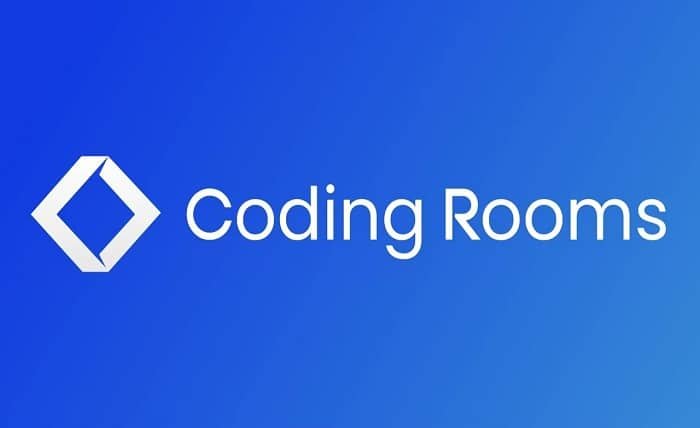Mastering the Art of Learning with Coding Rooms: A Complete Guide

The world of education has been transforming, particularly with the rise of coding as a fundamental skill. As a result, platforms like Coding Rooms have emerged to help students, educators, and professionals alike streamline their learning experience. Coding Rooms is an online learning platform designed to help individuals improve their coding skills through interactive exercises, live collaboration, and personalized feedback.
Whether you’re a beginner looking to learn your first lines of code or an experienced developer wanting to refine your skills, Coding Rooms offers a powerful environment that fosters growth. In this blog post, we will explore what Coding Rooms is, how it works, and how it benefits learners and educators in today’s digital learning environment.
How Coding Rooms Enhances the Learning Experience
One of the standout features of Coding Rooms is its ability to significantly enhance the learning experience. Traditional learning environments often struggle to provide hands-on, real-time feedback to students, especially when it comes to coding. However, Coding Rooms addresses this gap by offering an interactive, web-based platform where learners can write, test, and debug their code instantly.
The platform provides a variety of learning resources, including coding exercises, instructional videos, and practice problems. This not only helps learners grasp coding concepts faster but also keeps them engaged. Teachers can monitor their students’ progress in real-time, offering instant feedback and support when needed, making Coding Rooms an invaluable tool for both students and instructors alike.
Key Features of Coding Rooms
Coding Rooms is not just another online coding platform—it is a comprehensive tool designed to support both self-learners and those in a classroom environment. Let’s look at some of the key features that make Coding Rooms stand out.
1. Interactive Code Editor
At the heart of Coding Rooms is its interactive code editor, which allows students to write and test code directly in the browser. This eliminates the need for complex installations or setup procedures, which is often a barrier for beginners. The editor supports a variety of programming languages, including Python, JavaScript, and Java, among others.
2. Real-Time Collaboration
Coding Rooms makes collaboration seamless. Students can work together on coding assignments, and instructors can guide them through the process in real-time. This feature is especially useful for group projects, pair programming, or collaborative learning.
3. Instant Feedback
One of the most powerful aspects of Coding Rooms is the instant feedback system. As soon as a student submits their code, the platform automatically runs tests and checks for errors, providing immediate feedback. This helps learners quickly identify their mistakes and improve their coding skills faster.
4. Assignments and Grading
For instructors, Coding Rooms provides tools to create assignments, quizzes, and projects. These can be customized to suit the learning needs of their students. The platform also supports automated grading, saving educators valuable time while ensuring fairness in the assessment process.
5. Integrated Support and Tutorials
Coding Rooms offers built-in tutorials and documentation to help students learn new concepts at their own pace. The tutorials are structured in a way that makes them suitable for beginners, while also offering advanced topics for more experienced learners.
Coding Rooms for Beginners: A Perfect Starting Point
For beginners, Coding Rooms is a game-changer. Learning how to code can be intimidating, but with the platform’s intuitive design and beginner-friendly features, students can quickly ease into the world of programming. Unlike traditional methods of learning, where beginners often struggle with technical issues and complicated setups, Coding Rooms offers a smooth, accessible learning experience.
The interactive environment allows beginners to write code in an online editor, view the results instantly, and get immediate feedback. This real-time process helps beginners understand coding concepts more effectively, as they can quickly make adjustments and see how their changes impact the code.
Moreover, Coding Rooms offers structured courses and projects that are designed specifically for beginners. These resources guide learners step-by-step through various coding concepts, from basic syntax to more advanced topics like data structures and algorithms.
Coding Rooms for Educators: Revolutionizing the Classroom
While Coding Rooms is an excellent tool for students, it is equally beneficial for educators. The platform enables teachers to monitor their students’ progress in real-time, ensuring that no one falls behind. With Coding Rooms, instructors can see who is struggling with specific concepts and provide targeted support to those who need it the most.
In addition to real-time monitoring, Coding Rooms allows educators to create custom assignments, tests, and quizzes. These can be automatically graded, allowing instructors to focus more on teaching and less on administrative tasks. The platform also supports integrations with popular Learning Management Systems (LMS), further streamlining the teaching process.
Another feature that educators love is the ability to create coding challenges that are tailored to their curriculum. These challenges can range from simple exercises for beginners to complex projects for advanced learners. This flexibility ensures that every student can work at their own pace and level of understanding.
The Benefits of Using Coding Rooms for Coding Bootcamps
Coding bootcamps have become increasingly popular as an alternative to traditional college education. These intensive programs focus on teaching coding skills in a short period, helping students transition into tech careers quickly. Coding Rooms has become a go-to platform for many coding bootcamps because of its flexibility, ease of use, and robust features.
For bootcamp instructors, Coding Rooms simplifies the task of managing large groups of students. Instructors can easily assign tasks, monitor progress, and provide personalized feedback to individual students. The platform’s interactive nature also ensures that students stay engaged and are constantly challenged with real-world coding problems.
Bootcamps also benefit from Coding Rooms’ collaboration tools, which encourage peer learning and teamwork. Students can work together on coding projects, solving problems collectively and learning from one another. This collaborative approach mimics real-world software development practices, making it an ideal environment for coding bootcamp learners.
How Coding Rooms is Revolutionizing Remote Learning
In the age of remote learning, Coding Rooms has proven to be an invaluable tool for both students and educators. The platform’s cloud-based setup ensures that students can access their work from anywhere with an internet connection. This is particularly important as more schools, universities, and coding bootcamps shift to online learning.
Coding Rooms is also designed to facilitate remote collaboration. Students and instructors can engage in live coding sessions, share their work in real-time, and troubleshoot problems together. This level of interaction is often difficult to achieve with traditional online courses, making Coding Rooms a standout solution for remote coding education.
For students working from home or in remote locations, Coding Rooms offers a way to stay connected with their peers and instructors, ensuring that they receive the same level of support and feedback as they would in an in-person classroom. This makes remote learning more effective and engaging for coding students.
Conclusion
Whether you are a student trying to learn coding from scratch, an educator looking for an interactive teaching platform, or a coding bootcamp participant aiming to refine your skills, Coding Rooms offers everything you need to succeed. With its interactive code editor, real-time collaboration, and instant feedback system, Coding Rooms provides an unparalleled learning experience.
By offering tools designed specifically for coding education, Coding Rooms ensures that learners are actively engaged and receive the support they need to thrive. The platform’s flexibility, ease of use, and powerful features make it the perfect solution for anyone looking to learn or teach coding in today’s fast-paced, digital world.
FAQs
1. What is Coding Rooms used for?
Coding Rooms is an interactive online platform designed to teach coding. It allows users to write, test, and debug code in real-time, offering immediate feedback. It’s ideal for beginners, educators, and coding bootcamps.
2. Can I use Coding Rooms for free?
Yes, Coding Rooms offers a free version with basic features. However, to access premium features like advanced analytics, custom assignments, and more, you would need a paid subscription.
3. What programming languages does Coding Rooms support?
Coding Rooms supports multiple programming languages, including Python, JavaScript, Java, C++, and others, making it versatile for various coding courses and projects.
4. Is Coding Rooms suitable for educators?
Yes, Coding Rooms is designed with educators in mind. It allows teachers to create assignments, monitor student progress, and provide real-time feedback, streamlining the teaching process.
5. How does Coding Rooms help with real-time collaboration?
Coding Rooms facilitates real-time collaboration by allowing students and instructors to work on the same code simultaneously. This collaborative environment enhances peer learning and group projects.





